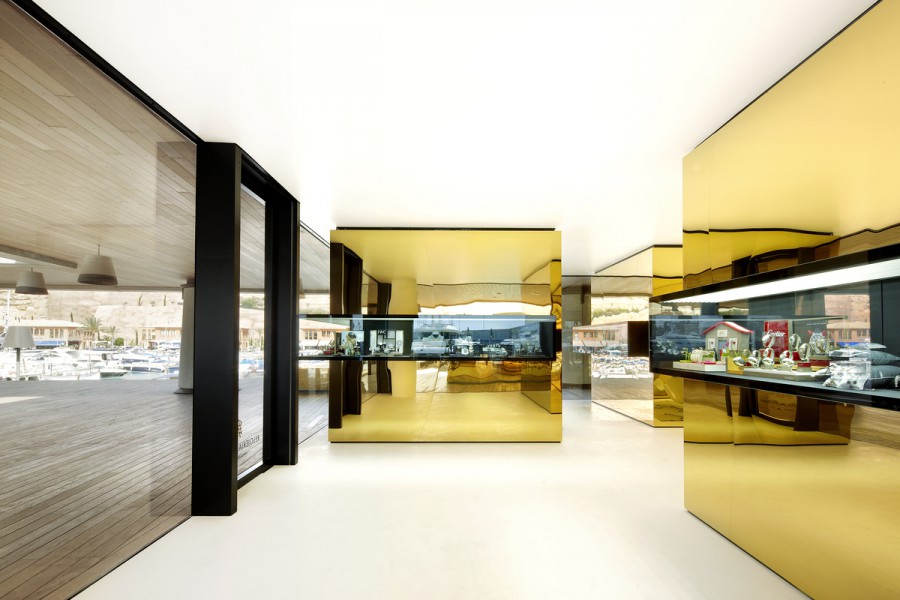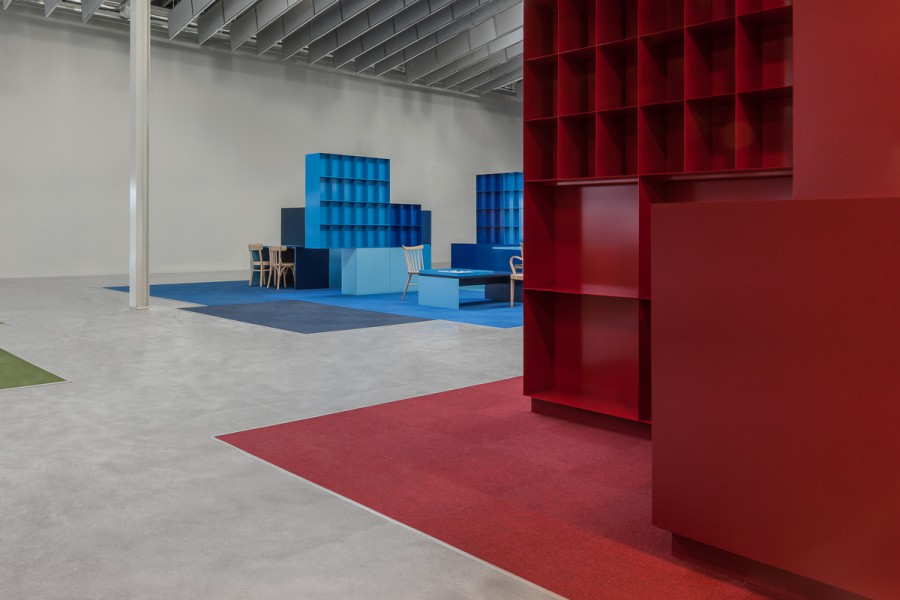The Great Indoors Award 2013
1.9—16.11.2013

The Great Indoors Award is an international, biennial, interior design award. On 15 November, during a festive Award Ceremony, the winners of the 2013 edition were announced in four categories. The Great Indoors is an initiative of FRAME magazine, Bureau Europa/platform for architecture, and Marres, House for Contemporary Culture.
The International Jury
With 271 entries from 39 countries, The Great Indoors managed to attract top interior designers worldwide. The international jury consisted of: Edouard François (FR), Director Maison Edouard François, Paris; Beatrice Galilee (UK), Chief curator of 2013 Lisbon Architecture Triennale, London; Fabrizio Gallanti (IT), Associate Director Programs at Canadian Centre for Architecture, Montreal; Christien Meindertsma (NL), Designer, Rotterdam; Lyndon Neri (CN), Founding Partner of Neri&Hu Design and Research Office, Shanghai and Design Republic, Shanghai. The jury selected 20 nominees, four in each category: Show & Sell, Relax & Consume, Concentrate & Collaborate, and Serve & Facilitate.
Winner Category Show & Sell: Relojeria Alemana Boutique designed by OHLab (ES)

Five ‘precious boxes’, housing various functions, are the real gems in OHLab’sMallorcan jewellery store. These stainless steel-clad volumes with golden mirror finishes add a sense of tangible luxury to the space, which the jury cites as a ‘very daring and well-proportioned project’ while complimenting the designers for ‘convincing the client that the architecture of a shop is at least as important as the merchandise’.
Winner Category Relax and Consume: Pakta Restaurant designed by El Equipo Creativo (ES)

Traditional Peruvian weaving looms create the tactile, colourful walls of a Barcelona eatery. On the looms are intersecting rows of cord, which give the place its name: in Quechua, pakta means ‘union’, a term that also reflects a blend of cultures. Faced with the ‘impossibly high standards of a three-star chef’, the architects impressed the jury with a solution based on ‘a few strong gestures’.
Winner Category Concentrate & Collaborate: Social Workplace designed by i29 (NL)

A whimsical setting of colour-coded islands enlivens the ordinary interior of an office for the unemployed in Den Hoorn. Spaces separated by colour, instead of by walls, enforce the humane design concept that people should not be placed in boxes. Swaying the jury was i29’s use of ‘banal elements in an interesting way to create complexity’ in a design that ‘challenges people to move through the space to discover it’.
Winner Category Serve & Facilitate: Cineteca Matadero designed by Churtichaga+Quadra-Salcedo Arquitectos (ES)

Ignoring the cinematic potential offered by converting a slaughterhouse into a movie theatre, CH+QS came up with an interior that is more fantasy than horror. Steel frames, interwoven with irrigation hoses and tube lighting, conjure an experience that seduces the senses. According to the jury, Cineteca Matadero is ‘a commendable technical insertion in an old building, showing the architects’ genuine understanding of what it means to go to the movies’.
Jury's reflections
The main objectives the jury distilled may be regarded as the current trends in interior design.
on the one hand, ‘the end of minimalism’, on the other, a patchwork of reused materials, styles and buildings. The empty, smooth and aesthetically overwhelming interior spaces of the recent past seem to have made way for more human, more tactile and more personal universes. Places built up from a rich array of fragments brought together to create decorative, atmospheric interiors. The jury allocates these reapplications of the personal and sees this reflected in the use of basic gestures, materials, colours, fabrics and everyday furniture. Breathing clarity and simplicity, these interiors are quite 'human', therefore the question arises: could one say that we – modern nomads – need comfortable and clear interiors to feel at home? Counterpointing our ever-so-flexible and dynamic lives, suggesting composition rather than design, process above the object, a narrative instead of a one-liner. Without being a particular style as such, many of the nominated interiors show decorative elements, which are brought together in a way that acknowledges cultural differentiation. Reinterpreting traditional elements, in search of authenticity and appreciation of craftsmanship, a contemporary identity is expressed and a cultural heritage is represented.
The personal and atmospheric universe is brought to its full potential in interiors that hint at a preoccupation with fiction, speculation and storytelling. Appearing to shake functional burdens, these interiors are spatially well designed as well as being visually kaleidoscopic, as if ushering in a new baroque. A full overview of The Great Indoors winners and nominees is featured in Frame 96, January/February 2014 Issue.
